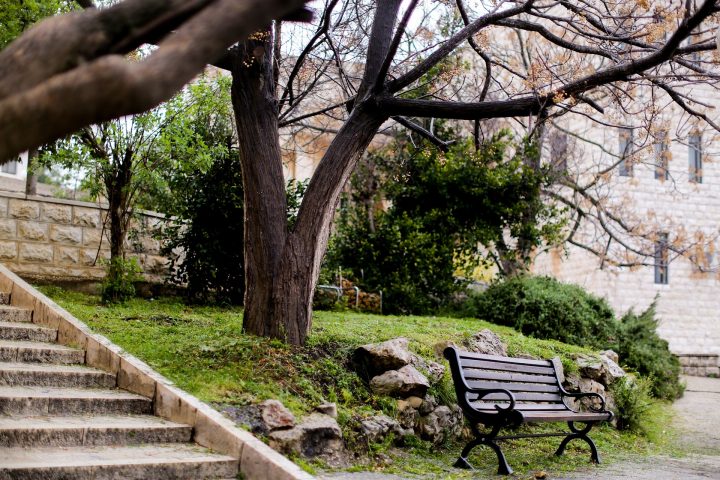Visit Ramallah: As the de facto capital of Palestine, Ramallah is a must-see for any visitor to the West Bank. With a different feel from the home city of the Palestinian center, Hebron, Ramallah can provide a change of pace for international volunteers. Only a short service taxi ride from Jerusalem, itself only a short ride from Hebron, it makes for an easy destination with lots of attractions for a weekend or day trip.
History of the city
Ramallah is a historically Christian city, having been founded by the Christian Arabs from east of the Jordan River in the mid-sixteenth century. After the 1948 Arab-Israeli War many of these Christian residents began to immigrate abroad, especially to the United States.
Muslim refugees
Muslim refugees largely replaced these migrants and today the city is majority-Muslim with a sizeable Christian minority. After the Palestinian National Authority (PA) and the Palestinian Liberation Organization (PLO) established their headquarters in Ramallah the city saw an economic and political boom. Palestinians began founding businesses in the city, foreign aid and investment flowed in, and foreign governments and NGOs established offices in the city.
The cuisine and nightlife
The presence of wealth and expatriates has created a cosmopolitan atmosphere and streets flooded with restaurants, bars, and clubs. Mexican cuisine, sushi, and fish and chips are all available in the city. Because the city is historically Christian, alcohol is also freely sold.
In fact, in 1994 a Palestinian American moved back to his ancestral village of Taybeh, just outside of Ramallah, and opened Palestine’s only micro-brewery. Every year during the first week of October they host Palestine’s only Oktoberfest. Modern dance clubs like those in the West can also be found in Ramallah. One guest from Japan, who visited Hebron for a day while traveling throughout Palestine, shared that she had visited her first club ever while in Ramallah.
Apart from the cuisine and nightlife, Ramallah also has a plethora of attractions for visitors. The Presidential Compound, or Mukataa, is located adjacent to the tomb of the late-Yasser Arafat, the first President of Palestine.
The Ramallah Cultural Palace, whose construction was funded by the Japanese government and the United Nations Development Program, holds a large auditorium and frequently hosts exhibitions and business conferences, as well as Classical and Hip-Hop concerts. Beside it is a memorial and museum dedicated to Mahmoud Darwish, a poet regarded as a national hero whose works focused on dispossession and exile and cast Palestine as a lost paradise.
From the city center, one can climb to the roof of the Area D Hostel, cleverly named to parody the administrative divisions of the West Banks: Areas A, B, and C. There one can look out and see the whole of Ramallah, Jerusalem, and the nearby Jewish settlement.
After the climb, one can grab a refreshment at Rukab’s, an ice cream parlor that serves a variety of ice cream derived from the same resin as bubble gum. The nearby Al-Kasaba Theatre presents films and plays and, in the past, has hosted Nobel laureates for discussions. The Dar Zahran Heritage Building is the family home of the Dar Zahran Jaghab family as it has been for centuries. Inside a photo gallery with pictures of Palestinians at work and play from the 19thcentury is open to the public.
Ramallah offers a view of Palestine that many foreigners do not imagine exists. It successfully juxtapositions the modern lifestyles of many Palestinians with the history that serves as the foundation for Palestinian culture. Volunteers and students at the Palestinian center should feel free to expand their horizons and get a varied look at Palestine by visiting Ramallah.

